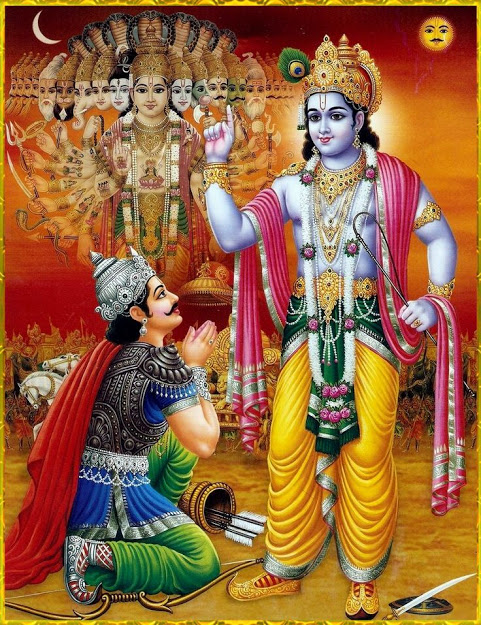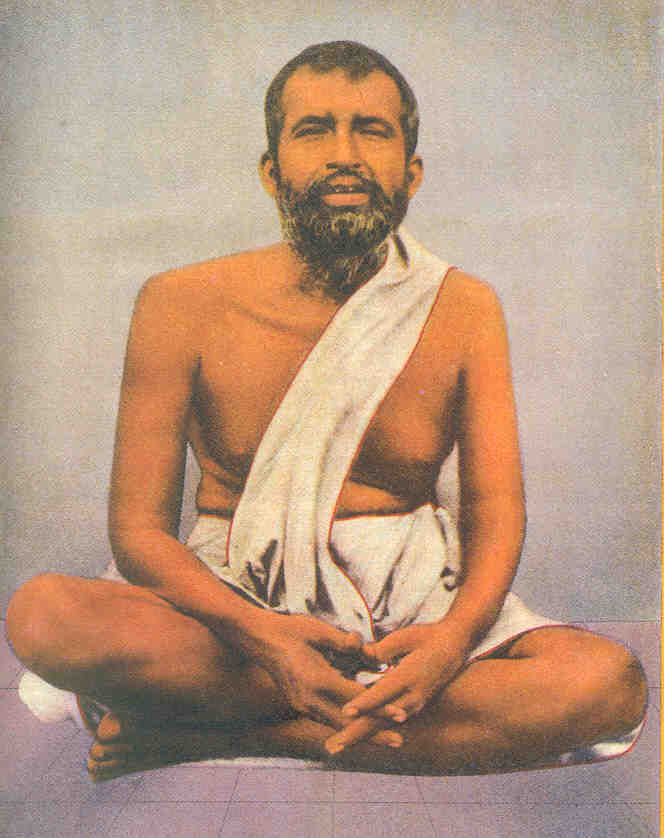All About Bharatiya Sanatana Dharmam otherwise known as Hinduism :CHAPTER 9-2, HINDU THEOLOGY - ,Theological Classifications - Hinduism—A Fellowship Of Faiths And A Federation Of Philosophies -..) - Swami Sivananda.
----------------------------------------------------------------------------------
CHAPTER 9 - 2.
HINDU THEOLOGY -
Theological Classifications -
Hinduism—A Fellowship Of Faiths And A Federation Of Philosophies.
Three great classes :
-----------------------------------------------------------------------------------
The Hindus are divided into three great classes, viz., Vaishnavas who worship the Lord as Vishnu; Saivas who worship the Lord as Siva; and Saktas who adore Devi or the Mother aspect of the Lord. In addition, there are the Sauras, who worship the Sun-God; Ganapatyas who worship Ganesa as supreme; and Kaumaras who worship Skanda as the Godhead.
---------------------------------------------------------------------------------------------------------------------------
1.The Vaishnavas :
Sri Sampradayins
The Vaishnavas are usually distinguished into four principal Sampradayas or sects. Of these, the most ancient is the Sri Sampradaya founded by Ramanuja Acharya. The followers of Ramanuja adore Vishnu and Lakshmi, and their incarnations. They are called Ramanujas or Sri Sampradayins or Sri Vaishnavas. They all repeat the Ashtakshara Mantra: ‘Om Namo Narayanaya.’ They put on two white vertical lines and a central red line on the forehead.
Vedanta Desika, a follower of Ramanuja, introduced some reform in the Vaishnava faith. This gave rise to the formation of two parties of Ramanujas, one called the Northern School (Vadagalai) and the other the Southern School (Tengalai). The Tengalais regard Prapatti or self-surrender as the only way to salvation. The Vadagalais think that it is only one of the ways. According to them, the Bhakta or devotee is like the young one of a monkey which has to exert itself and cling to its mother (Markata-Nyaya or Monkey Theory); whereas, according to the Southern School, the Bhakta or devotee is like the kitten which is carried about by the cat without any effort on its own part (Marjala-Nyaya or Cat-hold Theory). The Northern School accept the Sanskrit texts, the Vedas. The Southerners have compiled a Veda of their own called ‘Nalayira Prabandha’ or ‘Four Thousand Sacred Verses’, in Tamil, and hold it to be older than the Sanskrit Vedas. Really, their four thousand verses are based on the Upanishad portion of the Vedas. In all their worship, they repeat sections from their Tamil verses.
The Vadagalais regard Lakshmi as the consort of Vishnu. Herself infinite, uncreated and equally to be adored as a means (Upaya) for release. The Tengalais regard Lakshmi as a created female being, though divine. According to them, she acts as a mediator or minister (Purushakara), and not as an equal channel of release.
The two sects have different frontal marks. The Vadagalais make a simple white line curved like the letter U to represent the sole of the right foot of Lord Vishnu, the source of the Ganga. They add a central red mark as a symbol of Lakshmi. The Tengalais make a white mark like the letter Y which represents both the feet of Lord Vishnu. They draw a white line half down the nose.
Both the sects brand the emblems of Vishnu—the discus and the conch—on their breasts, shoulders and arms.
The Tengalais prohibit their widows from shaving the head.
The usual surnames of the Ramanuja Brahmins are Aiyangar, Acharya, Charlu and Acharlu.
---------------------------------------------------------------------------------------------------------------------------
2. Ramanandis :
3. Vallabhacharins Or Krishna Sampradayins :
The Vallabhacharins form a very important sect in Bombay, Gujarat and the Central India. Their founder was born in the forest Champaranya in 1479. He is regarded as an incarnation of Krishna. The Vallabhacharins worship Krishna, as Bala-Gopala. Their idol is one representing Krishna in his childhood till his twelfth year. The Gosains or teachers are family men. The eight daily ceremonials for God in the temples are Mangala, Sringara, Gvala, Raja Bhoga, Utthapana, Bhoga, Sandhya and Sayana. All these represent various forms of adoration of God.
The mark on the forehead consists of two red perpendicular lines meeting in a semicircle at the root of the nose and having a round spot of red between them. The necklace and rosary are made of the stalk of the Tulasi (holy Basil).
The great authority of the sect is the Srimad-Bhagavata as explained in the Subodhini, the commentary thereon of Vallabhacharya. The members of the sect should visit Sri Nathdvara, a holy shrine, at least once in their lives.
---------------------------------------------------------------------------------------------------------------------------
4. The Chaitanyas :
This sect is prominent in Bengal and Orissa. The founder, Chaitanya Mahaprabhu or Lord Gouranga, was born in 1485. He was regarded as an incarnation of Lord Krishna. He took Sannyasa at the age of twenty-four. He went to Jagannath where he taught Vaishnava doctrines.
The Chaitanyas worship Lord Krishna as the Supreme Being. All castes are admissible into the sect. The devotees constantly repeat the Name of Lord Krishna.
Chaitanya’s Charitamirita by Krishna Das is a voluminous work. It contains anecdotes of Chaitanya and his principal disciples and the expositions of the doctrines of this sect. It is written in Bengali.
The Vaishnavas of this sect wear two white perpendicular streaks of sandal or Gopichandana (a kind of sacred earth) down the forehead uniting at the root of the nose and continuing to near the tip. They wear a close necklace of small Tulasi beads of three strings.
---------------------------------------------------------------------------------------------------------------------------
5. The Nimbarkas :
The founder of this sect is Nimbarka or Nimbaditya. He was originally named Bhaskara Acharya. He is regarded as an incarnation of the Sun-God (Surya). The followers worship Krishna and Radha conjointly. Their chief scripture is the Srimad-Bhagavata Purana.
The followers have two perpendicular yellowish lines made by Gopichandana earth drawn from the root of the hair to the commencement of each eyebrow and there meeting in a curve. This represents the footprint of the Lord Vishnu.
The Nimbarkas or Nimavats are scattered throughout the whole of upper India. They are very numerous around Mathura. They are also the most numerous of the Vaishnava sects in Bengal.
--------------------------------------------------------------------------------------------------------------------------
6. The Madhvas :
The Madhvas are Vaishnavas. They are known as Brahma Sampradayins. The founder of the sect is Madhvacharya, otherwise called Ananda Tirtha and Purna-Prajna. He was born in 1200. He was a great opponent of Sankaracharya’s Advaita system of philosophy. He is regarded as an incarnation of Vayu or the Wind-God. He erected and consecrated at Udipi the image of the Lord Krishna.
The Gurus of the Madhva sect are Brahmins and Sannyasins. The followers bear the impress of the symbols of Vishnu upon their breasts and shoulders. They are stamped with a hot iron. Their frontal mark consists of two perpendicular lines made with Gopichandana and joined at the root of the nose. They make straight black line, with a charcoal from incense offered to Krishna, which terminates in a round mark made with turmeric.
The Madhvas are divided into two classes called the Vyasakutas and the Dasakutas. They are found in Karnataka.
Truthfulness, study of scriptures, generosity, kindness, faith and freedom from envy form the moral code of Madhvas. They give the Lord’s Names to their children (Namakarana), and mark the body with His symbols (Ankana). They practise virtue in thought, word and deed (Bhajana).
7. Radha Vallabhis :
Radha Vallabhis worship Krishna as Radha-Vallabha, the Lord or Lover of Radha. Harivans was the founder of this sect. Seva Sakhi Vani gives a detailed description of the notion of this sect and more of their traditions and observances.
Charana Dasis, Dadu Panthis, Hari Chandis, Kabir Panthis, Khakis, Maluk Dasis, Mira Bais, Madhavis, Rayi Dasis, Senais, Sakhi Bhavas, Sadma Panthis, are all Vaishnava sects.
Next -The Saivas :
To be continued ...
=========================================================================












.jpg)

Comments
Post a Comment